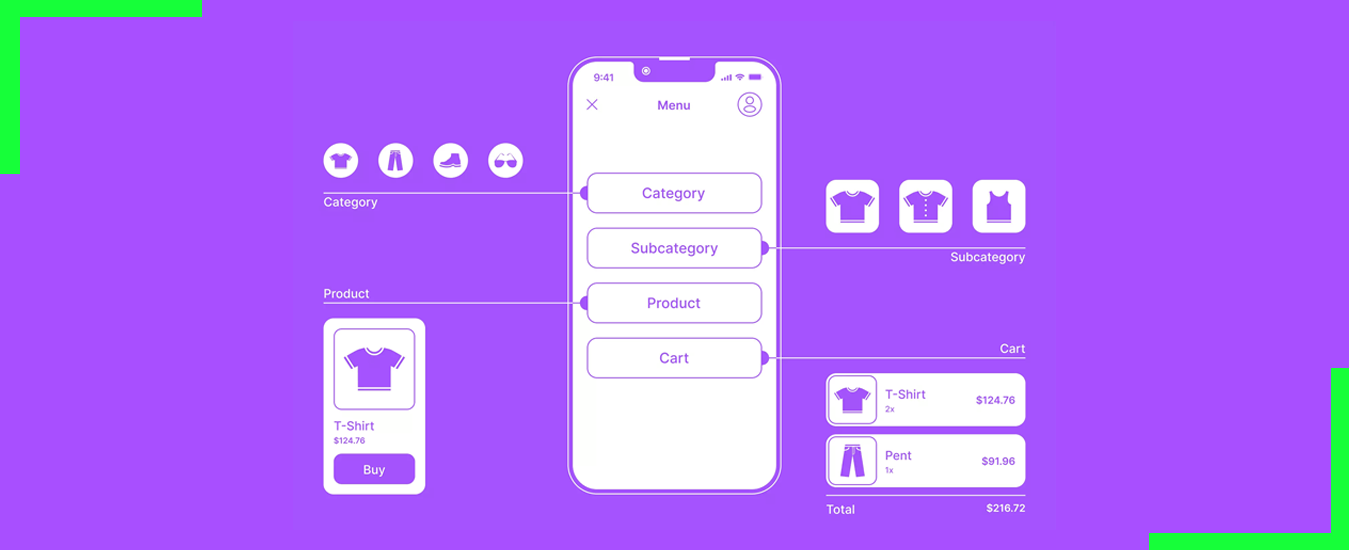As the online retail industry proliferates, users expect better & smoother buying experiences over time. Quality e-commerce UI/UX designs ensure an enhanced online shopping experience for its users. User experience & user interface design simplify the e-commerce website so that users can find their desired products with greater ease. Ultimately, it boosts the website’s conversion rates, offering better profits to retail brands.
With the invention of new technologies, the digital commerce scene is also set to evolve and incorporate these features with suitable design strategies. With this blog, we aim to discuss the latest e-commerce UI/UX design trends that are dominating the design industry. By implementing these trends, you can increase buyer conversion rates.
Keep reading to know more.
Top 8 E-Commerce UI/UX Design Trends
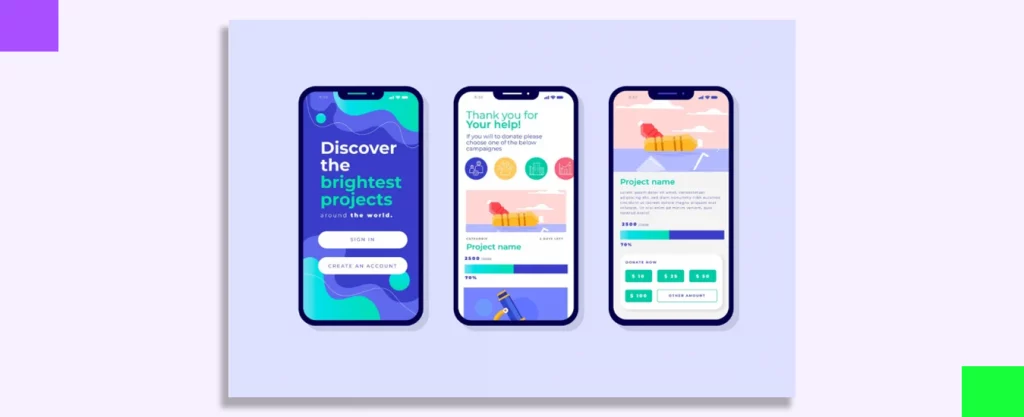
Conforming to new design trends in the UI/UX industry ensures steady business growth, offers you an edge over your competitors, and allows you to give a splendid user experience to your customers. It increases customer satisfaction which may further lead to customer retention offering you higher business profit.
The same is true for the UI/UX design of retail e-commerce platforms (websites & applications). Check the latest top 8 trends that you need to incorporate into your retail e-commerce business now.
1. Personalization and Customization

A report by McKinsey shows that 76% of buyers are more likely to purchase from brands that personalize their products & recommendations based on consumer preferences.
Personalization & customization have become two of the most sought-after features by online retail consumers. It empowers them to make easier shopping decisions & find products that suit their needs.
Another report from Sailthru observed that 80% of consumers were ready to share their personal information in exchange for a personalized buying experience. This goes on to tell how important tailoring your product recommendations can be for higher sales through e-commerce platforms.
Technology like big data & artificial intelligence helps businesses personalize their products based on their users. Maria Marinina in her article ‘Big Data for Ecommerce Personalization, Explained’ states, “[Creating recommendations] is probably one of the most commonly known big data applications in ecommerce.” Using consumer insights from these technologies, retail brands can tailor the UI & UX design to match each user’s preferences.
2. Mobile-First Design
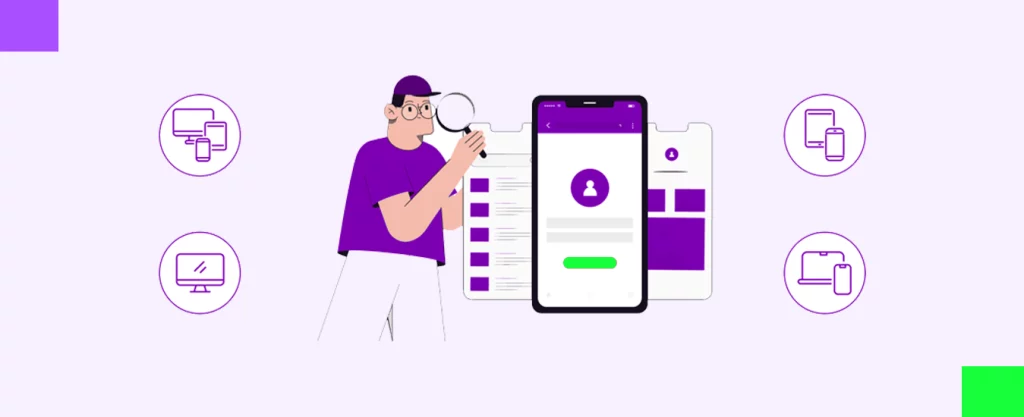
While many e-commerce brands started with a website, they all quickly adopted the mobile-first design approach either by creating an application or a responsive website. The increasing use of mobile devices to access the internet is the biggest reason for this trend.
As more people prefer to shop online using mobile devices (source: Outerbox), businesses need to upgrade their UI & UX designs to match the requirements. With mobile-first designs, your e-commerce platform can reach more people in the market. A responsive e-commerce website helps your users to access it from any device they use, regardless of whether it is a smartphone, tablet, or laptop.
With this evolution, the UI of the website must also change to match the touch interactions of a smartphone along with the clicks of a desktop. UI elements like typography, colors, button sizes, audio-visual elements, etc. are now created focusing the mobile interactions.
Furthermore, as search engines like Google & Bing give more preference to mobile-first websites, upgrading your ecommerce UI/UX design to match can also boost your search ranking.
3. Seamless Omnichannel Experiences
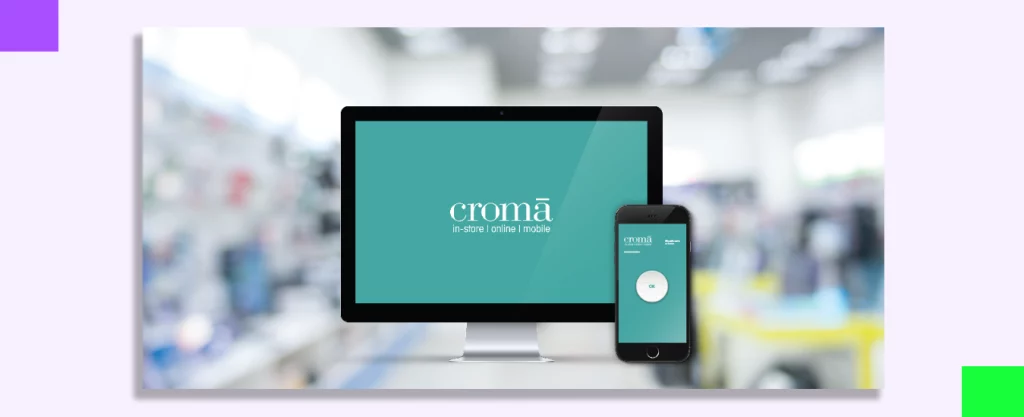
If you are offering products and services online & offline, then it is important to bridge the gap between the two. With seamless omnichannel buyer experiences, you can be sure to provide multiple touchpoints to create a cohesive user journey for your customers.
So, how do you achieve that?
Consistent UI/UX design across all your brand platforms (including website, application, & physical stores) can help you offer a smooth cross-platform experience to buyers and visitors.
Creating a streamlined omnichannel experience for the users enables them to continue their buyer journey from their mobile devices to the brick & mortar store experience by bridging the gap between online and offline.
4. Minimalist and Clean Design
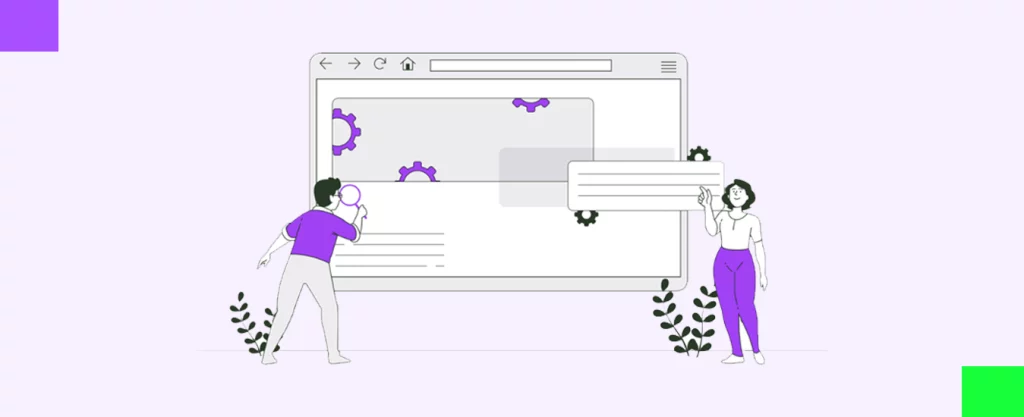
In one of our previous blogs on the top UI/UX design trends of 2024, we discussed how minimalism & brutalism is dominating UI designs across websites & apps. Both design styles focus heavily on cleaner interfaces, allowing users to understand and navigate the retail website or application with greater ease.
Minimalism refers to clean, functional design with an aesthetic appeal that gives off an elegant and professional look to your e-commerce website. On the other hand, one can identify brutalism by big, bold fonts, jarring color palettes, and sharp design elements.
While for most, the two trends may seem opposite, one thing is very common between them and that is the efficient use of white space & clean typography. Reducing visual noise to help readers focus on what is important sets the minimalist design apart from others. Whereas, brutalism focuses on highlighting the elements & content that matter to the users enhancing the retail user experience for their customers.
5. Voice User Interfaces (VUI) and Conversational Commerce
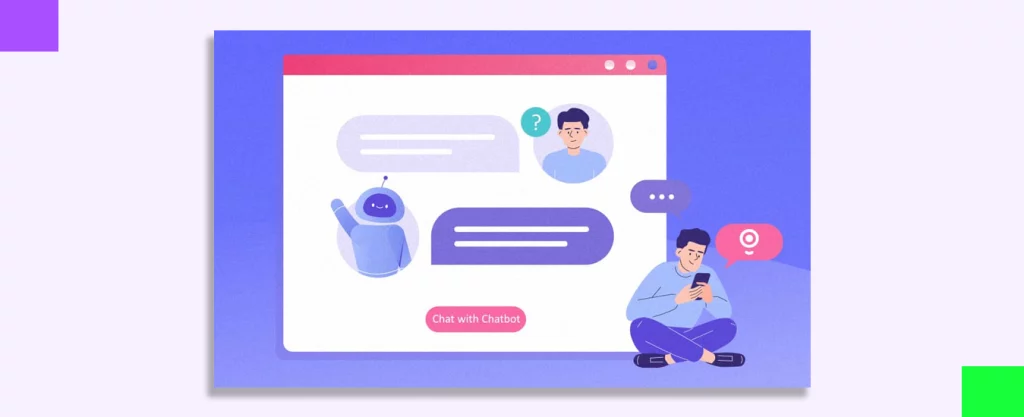
With the increase in the use of voice-operated devices like Amazon Echo & Google Home, conversational commerce is also increasing. To ensure that users can make easy purchases from their retail platforms, businesses are investing in improving their Voice User Interfaces (VUI).
Voice user interfaces use the buyer’s speech recognition to understand voice commands and offer results that align with the user query. The same VUI is used to allow users to make voice-based purchases.
VUI is a practice to streamline conversational commerce so that users can easily find and purchase products & services using voice commands. Big e-commerce giants like Amazon are focusing on enriching customer experience by designing intuitive voice interfaces. These voice interfaces enhance consumers’ retail interactions and encourage more online shopping.
Another area where enhancing the VUI helps retail businesses is customer support. With the help of artificial intelligence, UI designers can improve the retail brand’s online voice-enabled customer services to improve customer experience.
6. Augmented Reality (AR) and Virtual Reality (VR)
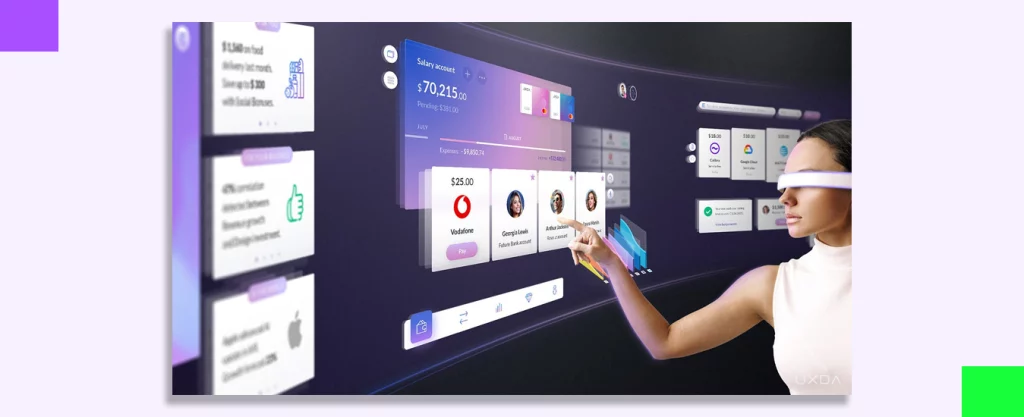
One of the biggest challenges with online shopping was to allow users to try the products before purchasing. Since users were shopping with their smartphones or laptops, they were only able to look at the product on their screens.
However, the use of Augmented Reality (AR) and Virtual Reality (VR) changed that. Retail e-commerce brands such as Lenskart, Nykaa, and Ikea use augmented reality to enable users to try their products virtually before buying.
This allows users to know the relative dimensions of the product, how it will look in their personal setting, and whether it matches their aesthetic preferences or not.
Furthermore, websites like Bajaj Chetak’s, provide a life-like virtual showroom experience for a product like scooters. This not only allowed the brand to give a familiar showroom experience to their customers in the midst of a pandemic but also enabled users to view all the important aspects of the product with greater clarity.
By incorporating AR & VR technology in e-commerce website design, you can offer a better user experience to your customers and increase the conversion rates of your website or platform. According to the Shopify report presented on DHL, AR & VR technologies can boost an e-commerce platform’s conversion rates by up to 94%. Hence, more online retail brands are opting to implement AR & VR technology in their e-commerce store’s UI & UX designs.
7. Accessibility and Inclusive Design
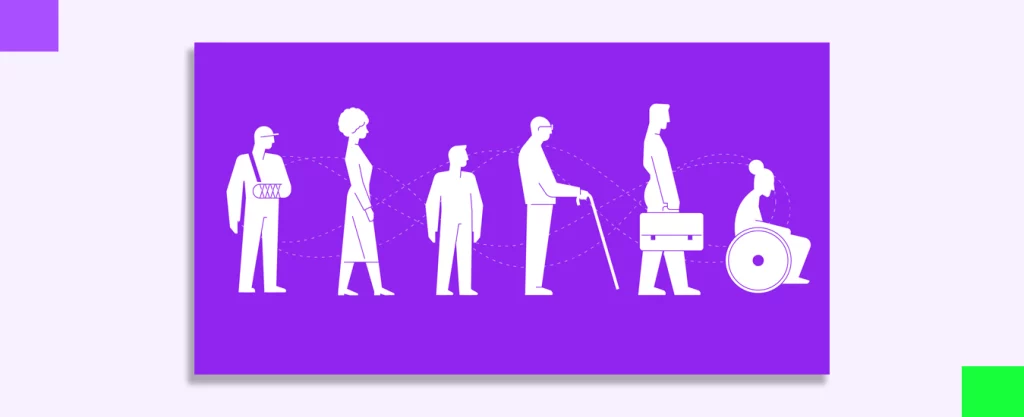
As Stevie Wonder rightly said, “We need to make every single thing accessible to every single person with a disability.” Accessibility and inclusive design for your e-commerce platform enable your products to reach a larger audience.
Accessibility empowers differently-abled people to access, navigate, and purchase from your e-commerce website. This comprises designing for diverse abilities, including visual impairment & motor disabilities. Creating an accessible and inclusive design improves your KPIs that measure brand success such as customer satisfaction, user engagement, conversion rates, and more.
In our article on accessibility & ADA compliance, we discuss several guidelines that drive accessible UI/UX designs. Check that out to know more about how you can make your e-commerce platform more accessible for your customers.
8. Social Commerce and User-Generated Content (UGC)

Marketing (and digital marketing at that!) play a crucial role in building brand trust. Users trust other users when making purchasing decisions. That is why leveraging your social media presence & user-generated content to boost your conversion rates is important.
Incorporating social elements like buttons to your social media, or sharing user-generated content on your website can immensely increase customer trust in your brand. Retail e-commerce brands like Myntra and Flipkart collaborate with social media influencers to create product inspiration guides for their users.
Furthermore, you can use your website or app to encourage your buyers to create social media content with your product. The way Pangaia does it.
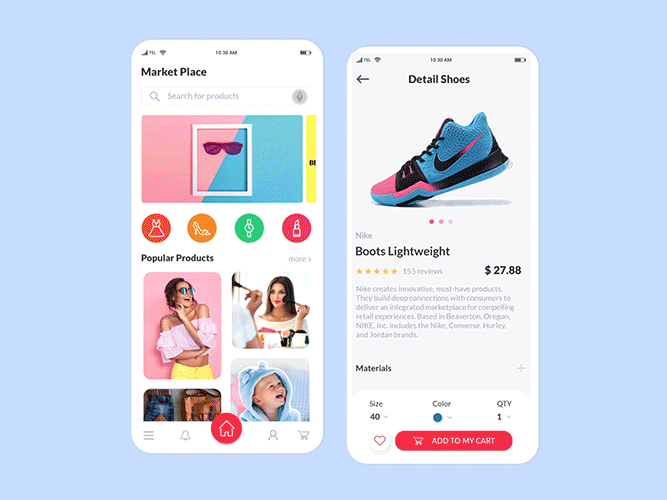
This gives you quality UGC with your satisfied customers, builds brand loyalty, and attracts new customers to your retail e-commerce website.
FAQs about E-Commerce UI/UX Design Trends
1. What is the importance of UI/UX in E-commerce?
The e-commerce user interface & user experience are crucial to allow your customers to easily find their desired products & services and convert faster. Apart from that, it offers many other benefits:
- Improved user engagement
- Enhanced user satisfaction
- Increased conversions & sales
- Consistent branding & brand recognition
- Mobile optimization
- Efficiency in product search and filtering
- Improved personalization & recommendations
- Reduced cart abandonment
And much more.
2. How can I improve my UI/UX for an e-commerce website?
One way is to follow the UI/UX design principles for an e-commerce website. And the other way is to hire an ecommerce UX agency like Yellow Slice.
3. What are the e-commerce UX trends in 2023?
In this article, we have added the top 8 e-commerce UI/UX design trends. These are:
- Personalization and customization
- Mobile-first design
- Seamless omnichannel experience
- Minimalist & clean design
- Voice user interface (VUI) & conversational commerce
- Augmented reality & virtual reality
- Accessibility & inclusivity
- Social commerce & user-generated content
Implement these ecommerce UX trends to upgrade your online retail platform experience.
4. What is the future of e-commerce?
Many experts believe that
- Hyper-personalization,
- Use of AR/VR technology, and
- Voice-based shopping
Would be a part of the future of e-commerce.
Conclusion
With evolving technology, the user experience & interface designs will also keep evolving. Retail e-commerce brands need to stay updated to offer exceptional customer experience to all their visitors & buyers. Only then, the e-commerce platforms can stay above the competition to garner higher profits and user trust.
Trends like personalization, use of AR/VR, social commerce, and voice user interfaces will enhance the customer experience to boost conversion rates while mobile-first designs, minimalist UI, seamless omnichannel experience, and higher accessibility contribute to increasing customer trust in the e-commerce platform increasing the consumer shelf life & retention.
Want to know how Yellow Slice can help you boost your e-commerce platform? Send us a message for a quick consultation call.
